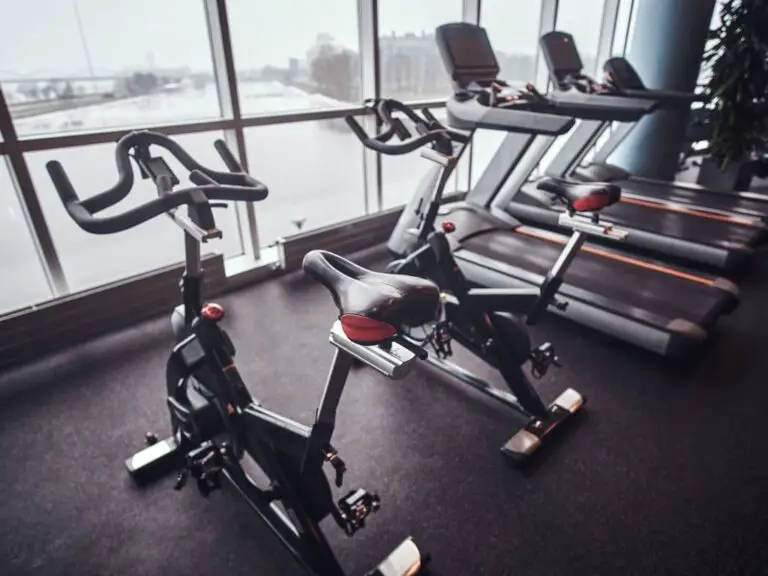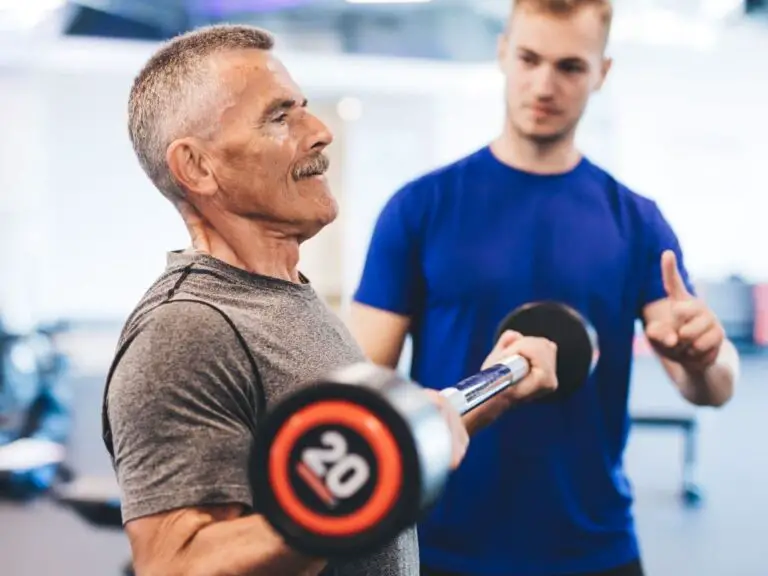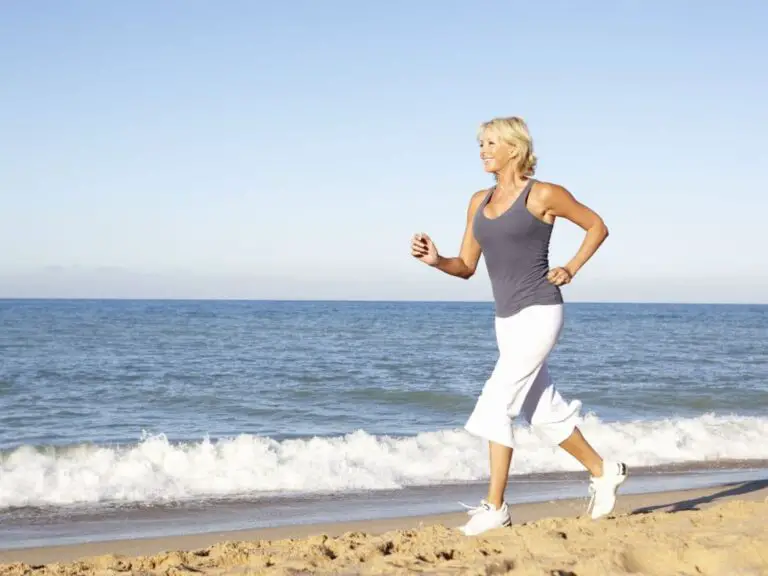Is It Good to Walk With Weights in Your Hands?
Walking with weights in your hands can be an effective way for seniors to improve their fitness and overall health. However, there are some important factors to consider before embarking on this type of exercise regimen.
Walking with weights in your hands can be beneficial, particularly for seniors, as it improves muscle strength, increases bone density, enhances balance, elevates heart rate, and burns more calories. However, it’s essential to start with light weights, maintain proper form, walk on even surfaces, and listen to your body to avoid injury. Consulting a doctor before starting is also recommended.

In this article, we will explore the potential benefits and risks of walking with weights, and provide tips for seniors who want to walk with weights safely.
Is It Safe for Seniors to Walk with Weights in Their Hands?
When using weights while walking, it is crucial for seniors to be aware of the potential risks and take steps to minimize them. Some key safety considerations include:
- Start with a light weight. Begin with a manageable 1-3 pound hand weight in each hand. As your strength improves, you can gradually increase the weight. Going too heavy too soon raises your risk of injury.
- Use proper form. Keep your core engaged, head up, and shoulders back. Don’t clench hands tightly around the weights – keep a firm but relaxed grip. Improper form can strain muscles.
- Walk on a flat, even surface. Concrete sidewalks or walking tracks are ideal. Avoid walking with weights on uneven ground, which can lead to tripping and falls.
- Listen to your body. If you feel pain, fatigue, or discomfort, stop and take a break. Don’t overexert yourself. Build up duration and intensity slowly over time.
- Wear sturdy shoes. Cushioned walking or cross-training shoes provide support and stability for walking with weights. Proper footwear helps prevent rolled ankles or falls.
By starting carefully, using proper form, and listening to their bodies, seniorscan safely walk with hand weights to improve fitness. Consulting a doctor before starting a new exercise program is also recommended.
What are the Benefits of Walking with Weights for Seniors?
Walking with hand weights provides several benefits for seniors:
- Improved muscle strength. Carrying light hand weights engages arm, shoulder, and grip muscles as you walk. This helps build and maintain upper body strength.
- Increased bone density. The impact of walking with weights places positive stress on bones, improving bone health. This helps prevent osteoporosis.
- Better balance and stability. Walking while holding weights challenges core muscles to keep the body steady. This enhances balance and coordination.
- Elevated heart rate. Adding hand weights makes walking more challenging. This increases heart rate for improved cardiovascular fitness.
- More calories burned. The extra effort of holding weights while walking burns more calories per minute than regular walking. This enhances weight loss and management.
By providing a mix of aerobic, strength, and balance benefits, walking with hand weights can be an excellent overall exercise for seniors seeking to maintain health and physical functioning.
What Type of Weights Should Seniors Use When Walking?
Seniors have several options when it comes to selecting hand weights for walking, including:
- Dumbbells: Traditional modular weights that can be adjusted as strength increases. Dumbbells allow flexibility in weight selection.
- Wrist weights: Compact, strap-on weights worn around the wrists. These target arms but don’t activate grip strength.
- Ankle weights: Similar to wrist weights, but worn around the ankles to increase leg effort. Not ideal for walking.
- Weighted vests: Distributes added weight across the torso. Allows natural arm swing. More intense than hand weights.
The right type of weight comes down to comfort, convenience, intensity goals, and targeted muscles. Most experts recommend starting with 1-5 pound dumbbells as the most versatile hand weight option for seniors.
How Much Weight Should Seniors Use When Walking with Weights?
When determining how much weight to use for walking, seniors should:
- Consult their doctor – Get guidance on a safe weight amount based on current fitness level, health status, and individual goals.
- Start very light – Begin with 1-3 pound weights and focus on maintaining proper posture and form. Better to start too light than too heavy.
- Increase weight gradually – After a few weeks, add another 1-2 pounds per hand if comfortable. Increases should feel manageable, not painful.
- Listen to your body – Don’t increase weight again until the current amount feels relatively easy to carry. Pay attention to any discomfort signals.
- Aim for challenge – The proper weight provides mild muscle fatigue by the end of a 20-30 minute walk. If not feeling challenged, may need heavier weights.
The right weight for each senior walker will vary based on the individual. Adjusting the weights used based on feedback from your body is the best gauge for choosing the optimal amount of weight for you.
How Often Should Seniors Walk with Weights?
Most fitness experts recommend seniors walk while carrying hand weights 2-3 times per week, for 20-30 minutes per session. This allows sufficient recovery time between strength-building walks.
It’s best to start with shorter durations (10-15 minutes) and lower frequency (1-2 times per week) when first getting started. As your fitness improves, you can progressively increase the length and frequency of weighted walks.
Ideally, work weighted walking sessions into an overall exercise program that also includes balance and flexibility activities. For additional health benefits, supplement weighted walks with other types of moderate cardio, such as swimming, cycling, or water aerobics 2-3 times per week.
Remember not to push too hard when getting started. Allow your body time to adapt to the extra challenge of weights before ramping up duration, frequency, or weight levels. Patience and consistency is key.
What are Some Tips for Walking with Weights Safely for Seniors?
Here are some key tips for seniors to walk safely with weights:
- Choose flat, even surfaces free of obstructions and debris to improve stability. Grass or trails can be uneven.
- Wear shoes with proper arch and heel support and good traction to prevent slips. Proper footwear is a must.
- Start with lighter weights, proper posture, and relax your grip to minimize muscle strain and injury risk. Perfect form first.
- Take your time and go at your own pace. Don’t overwhelm your muscles starting out. Build up duration and exertion gradually.
- Monitor your exertion level and watch for signs of overexertion like pain, soreness, excessive shortness of breath.
- Stay hydrated and listen to your body. Stop immediately if you feel off balance, excessive fatigue, or pain.
By starting carefully, choosing proper equipment, using good form, and monitoring your body’s signals, seniors can safely walk with weights for better strength, fitness, and health. Consult your doctor before starting any new exercise regimen.
Frequently Asked Questions
-
Is it good to walk with weights in your hands?
Do not carry weights around in your hands. This can cause postural problems and add stress to your neck and shoulders. While this might not cause a problem for a walk, it could be a major issue over the long-term. You can place additional stress on your knees and ankles if you use ankle weights.
-
Should I wear weights while walking?
Downey cautions against wearing ankle weights when you are walking, or doing aerobics. They force you to use the quadriceps muscles (the ones in front of your thighs), and not the hamstrings (in back). Downey states that this causes muscle imbalance.
-
How much should you exercise if you have a desk job?
According to the study, those sitting for more than eight hours a day should exercise for one hour per day. Those who are seated for less than six hours a day should exercise for 30 minutes.
-
What is a heavy weight for a woman?
She says that most women regard a dumbbell weighing in at around 10 pounds as heavy.
-
Will 2 pound weights do anything?
When recovering from an injury, 2 lb. weights can be a great choice. You may be able to use 2 lb. weights if you are recovering from injury, illness, or just getting started with exercise. For an arm exercise, dumbbells are a great option.
-
Why should you not sit down after exercising?
If you do your leg exercises, you will find that you don’t use your legs as much. Therefore, you won’t pump blood back to your heart from the veins if your feet aren’t moving. Your blood pressure will drop if not enough blood reaches the heart.
-
How long does it take to tone arms?
What is the time it takes to get rid of flabby arms. You can notice a significant increase in the development of your upper arms if you exercise your arms two to three times per week and improve your nutrition. This could take as little as six weeks. Your arms will tone faster if you lose as much body fat as possible.
-
How do you get rid of flabby underarms?
Regular exercise and a healthy diet will reduce your underarm fat and overall body fat. The area can be sculpted by strengthening the shoulders, upper arms, chest, back and chest with exercises that toning.
-
What happens when you shower immediately after workout?
After a hard workout, taking a shower can help to restore your muscles and increase your body’s capacity to rebound and prepare for the next one. Showering after a workout can cause lactic acid to build up in your muscles, which causes soreness.
-
Can you lose weight doing seated exercises?
Chair exercises can be done from the office, at home, or in class. They are low-impact and easy to add movement to your daily routine. A 32-minute session can help you burn between 120 and 250 calories. If you add weights or resistance bands, the number of calories burned will go up even further.







